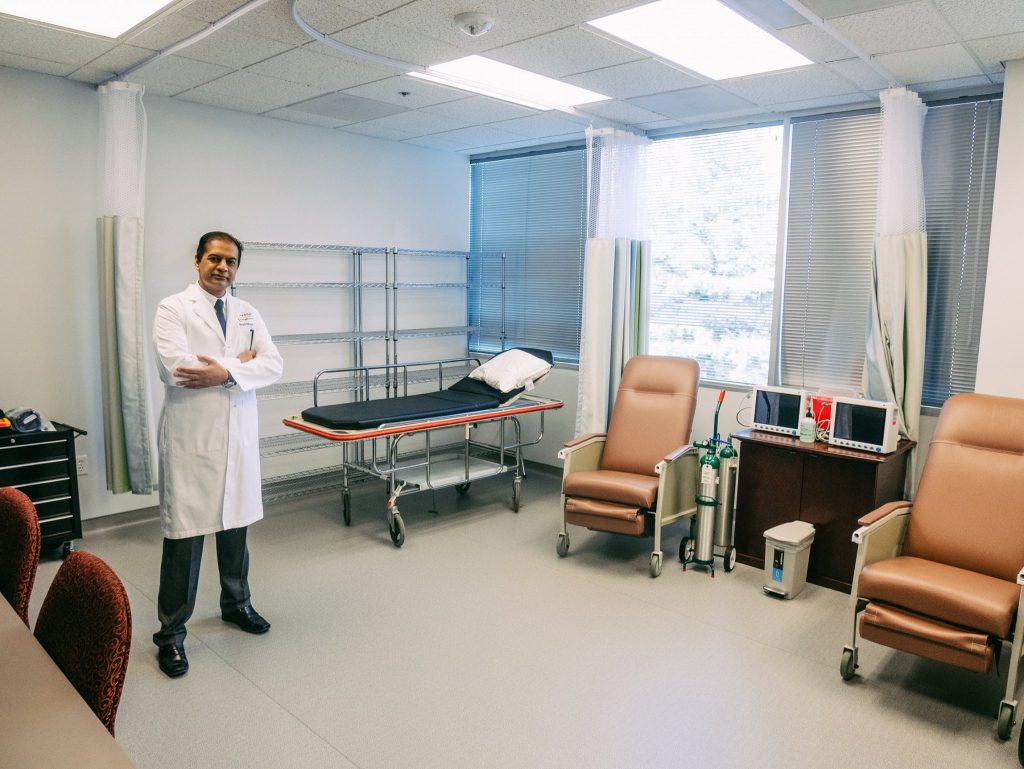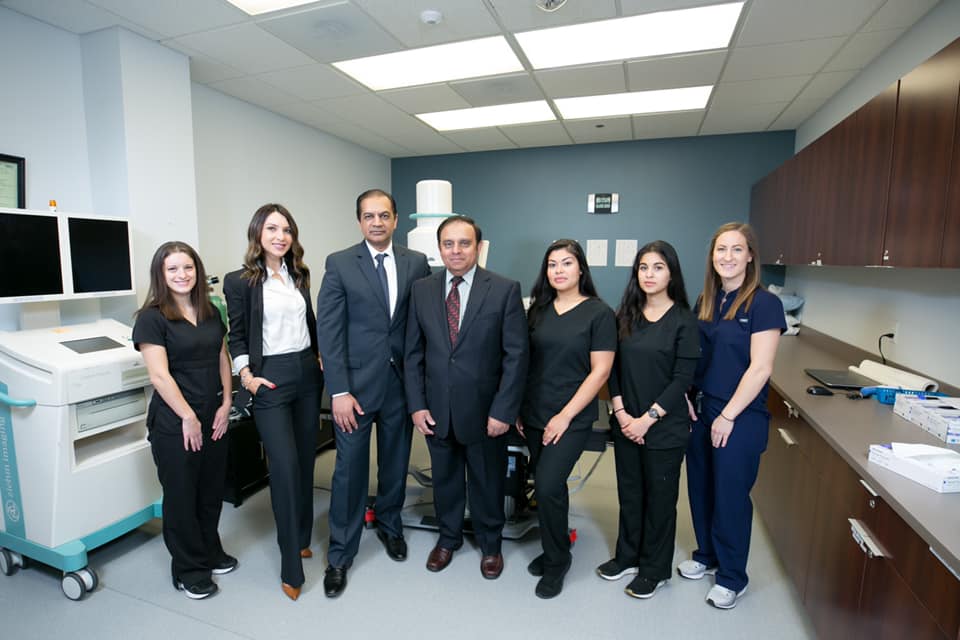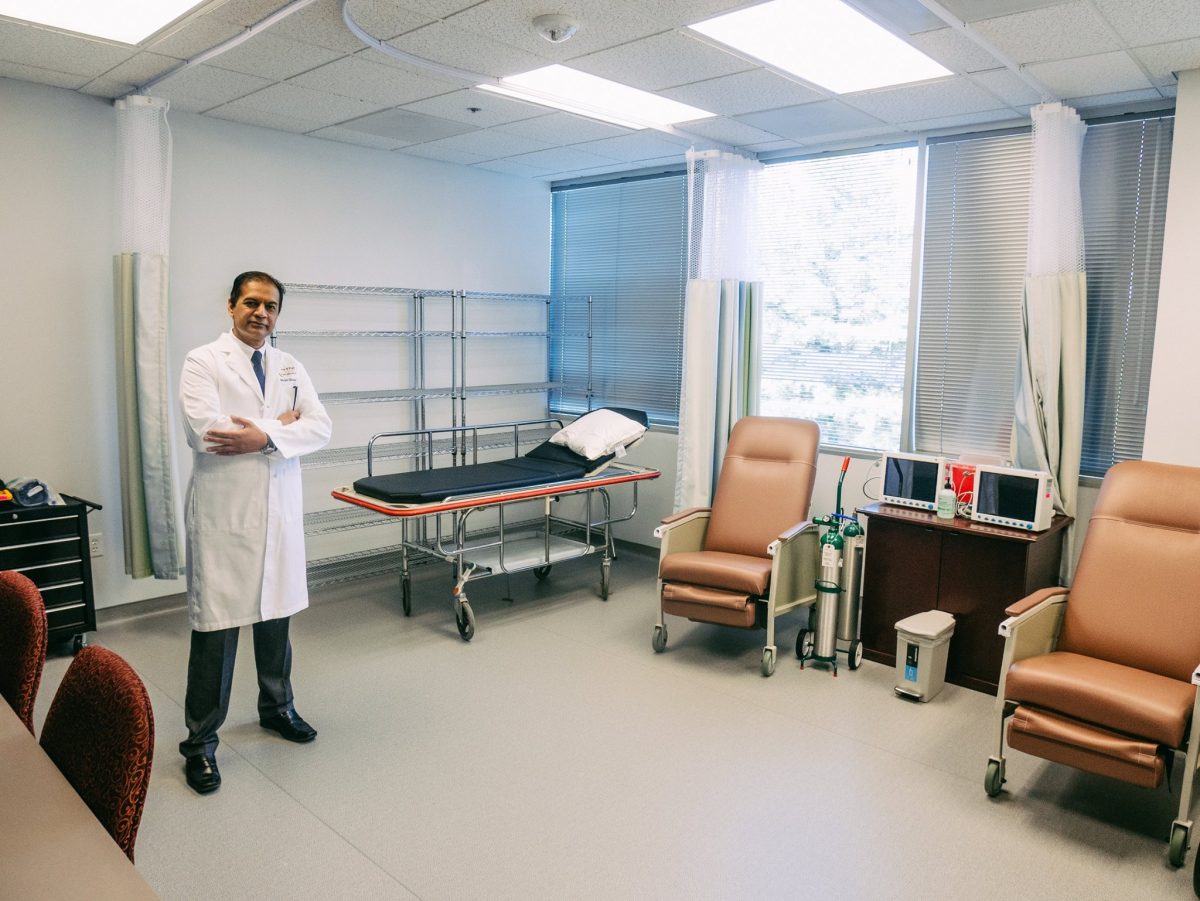
- The Challenge of Managing Pain
- What is Pain Management?
- What Does a Pain Clinic Do?
- Options for Pain Management
- Pain Clinic Offers State-of-the-Art Treatments
It is estimated that 50.2 million adults or 20.5 percent of the U.S. adult population experiences pain either every day or most days. The most common areas of pain are the back, hip, knee and foot.(1) Pain causes significant disruptions in personal and work lives leading people to search for relief with a pain doctor at a pain clinic. Experts in pain management can develop customized treatment plans designed to reduce or alleviate pain.
The Challenge of Managing Pain
Living with pain reduces the quality of life, and there are many causes of pain. They include a medical condition, injury, surgery or an unknown source. Pain is a complex biological mechanism that is meant to protect the body by letting a person know something is wrong. Pain is signaled via pain receptors attached to nerves that send signals to the spinal cord and brain.
Determining the location and source of pain is not always easy. For this reason, a pain clinic specializes can offer two types of services for diagnosis and treatment:
- Pain management physician
- Multi-disciplinary approach to the diagnosis and treatment of pain via a team of medical professionals that is led by a pain management physician
What is Pain Management?
Pain management is a process in which acute or chronic pain is controlled as much as possible with a variety of treatments. The goal is to minimize the pain resulting from surgery, injury, disease or infection to improve the quality of life. Pain management physicians can develop treatment plans that specifically target the type of pain caused by common conditions that include the following.
- Arthritis, including osteoarthritis and rheumatoid arthritis
- Back injuries and conditions like sciatica and herniated disks
- Musculoskeletal conditions due to injuries, disease or birth defects
- Chronic pain disorders like fibromyalgia
- Headaches like migraine headaches and cluster headaches
- Nerve damage
- Facial pain caused by conditions like trigeminal neuralgia
What Does a Pain Clinic Do?

It is easier to diagnose and treat pain caused by a specific injury or a medical condition like arthritis. Other types of pain are not as easy to treat because the pain is generalized, or there is no specific identifiable cause of the pain.
A pain management specialist will do a health evaluation to try and pinpoint the cause of the pain. Then the physician will evaluate when and where pain is experienced. Pain can either be located in one area, like a specific joint or neck muscle, or it can radiate. Radiating pain means the pain is traveling from some place in the body. The pain’s location is not at the source point.
What do pain management doctors do at a pain clinic? Pain clinic services include:
- Evaluation of the source of pain, if possible
- Evaluation of where pain is experienced
- Evaluation of the pain level or severity
- Evaluation of the impact of pain on the patient’s lifestyle
- Performing a variety of diagnostic tests that include bloodwork, x-rays, MRI, etc.
- Development of a pain management plan
The pain management physician in a clinic has easy access to other pain specialists for consultation purposes or for forming a team of specialists to address the more complex cases.
Options for Pain Management
How pain management works depends on the type of treatment plan developed. The plan normally involves a variety of treatments and lifestyle changes. Though pain management doctors prescribe medication, the goal is to reduce or manage pain without opioid pain medications if possible. Nonpharmacological therapies are the first treatment choices with the use of narcotics limited to patients who fail to respond to other treatments.
Another top goal is to help you develop the skills to manage pain on your own. This makes it more likely you can begin enjoying life activities or return to work. By using a range of interventional, nonsurgical and complementary treatments, surgery is often avoided in many cases.
Some of the typical elements of a pain management program developed at a pain clinic include the following.
-
Cognitive behavioral therapy
Psychological therapy that teaches self-management of pain that has proven effective for low to moderate chronic pain for conditions like chronic low back pain and fibromyalgia.
-
Massage
It is a short-term therapy for soft tissue injuries.
-
Physical therapy
A physical therapist develops an exercise plan that includes stretching, walking, strengthening and/or aerobic exercises; exercises are designed to increase mobility and flexibility.
-
Weight loss and dietary changes
Carrying too much weight can increase pain, especially in the joints; research studies have found that weight loss as part of an interdisciplinary treatment plan can lead to a significant reduction in pain intensity and lead to increased physical activity and lower psychological distress.
-
Exercise
Gentle home exercises to increase range of motion and flexibility have proven to improve physical functioning for pain conditions like osteoarthritis, low back pain, neck pain, fibromyalgia, spinal cord injury, etc. As the body gets stronger, pain severity lessens and quality of life improves.
-
Heat and cold packs
Cold packs applied to an injury area can reduce swelling which reduces pain; heat packs can relieve chronic pain in muscles and joints.
-
Medications
There are a variety of non-opioid medications used in pain management plans, including NSAIDS, antidepressants and muscle relaxants; also used are medications like joint injections, epidural steroid injections and nerve blocks.
Joint injections
Joint pain of any kind interferes with a person’s lifestyle and can become debilitating when it is chronic and intense.
Epidural Injections
The epidural space is a space that exists in the spine within the spinal canal. This space lies between two planes of tissue:
Medial Branch Nerve Blocks
People with back or neck pain frequently see a physician asking for relief.
-
Pain procedures
These are soome additional options for pain management, depending on the specific condition, include spinal cord stimulation, radiofrequency ablation and neuromodulation.
Spinal Cord Stimulation
Spinal cord stimulation is an invasive procedure that is used for nerve pain due to post-laminectomy syndrome…
Radiofrequency Ablation (RFA)
Rhizotomy or radiofrequency ablation is a surgical procedure that destroys problematic nerve roots that carry pain…
Pain Clinic Offers State-of-the-Art Treatments

A major advantage of visiting a Spine and Pain Clinic of North America, specializing in diagnosing and treating pain is that you get access to state-of-the-art medical treatments and the knowledge and expertise of a team of pain specialists. The pain process is complex, and each case is unique. Pain management physicians, Dr. Majid Ghauri and Dr. Ashraf Sabahat are experts in helping people restore their quality of life through pain reduction or elimination.
Sources
- Yong, R. Jason, et al. “Prevalence of chronic pain among adults in the United States.” PAIN: February 2022. Volume 163., Issue 2., p e328-e332. doi: 10.1097/j.pain.0000000000002291.
- https://pubmed.ncbi.nlm.nih.gov/25970869/
- https://pubmed.ncbi.nlm.nih.gov/33064421/
- https://pubmed.ncbi.nlm.nih.gov/34188533/
- https://www.ncbi.nlm.nih.gov/pmc/articles/PMC5461882/
